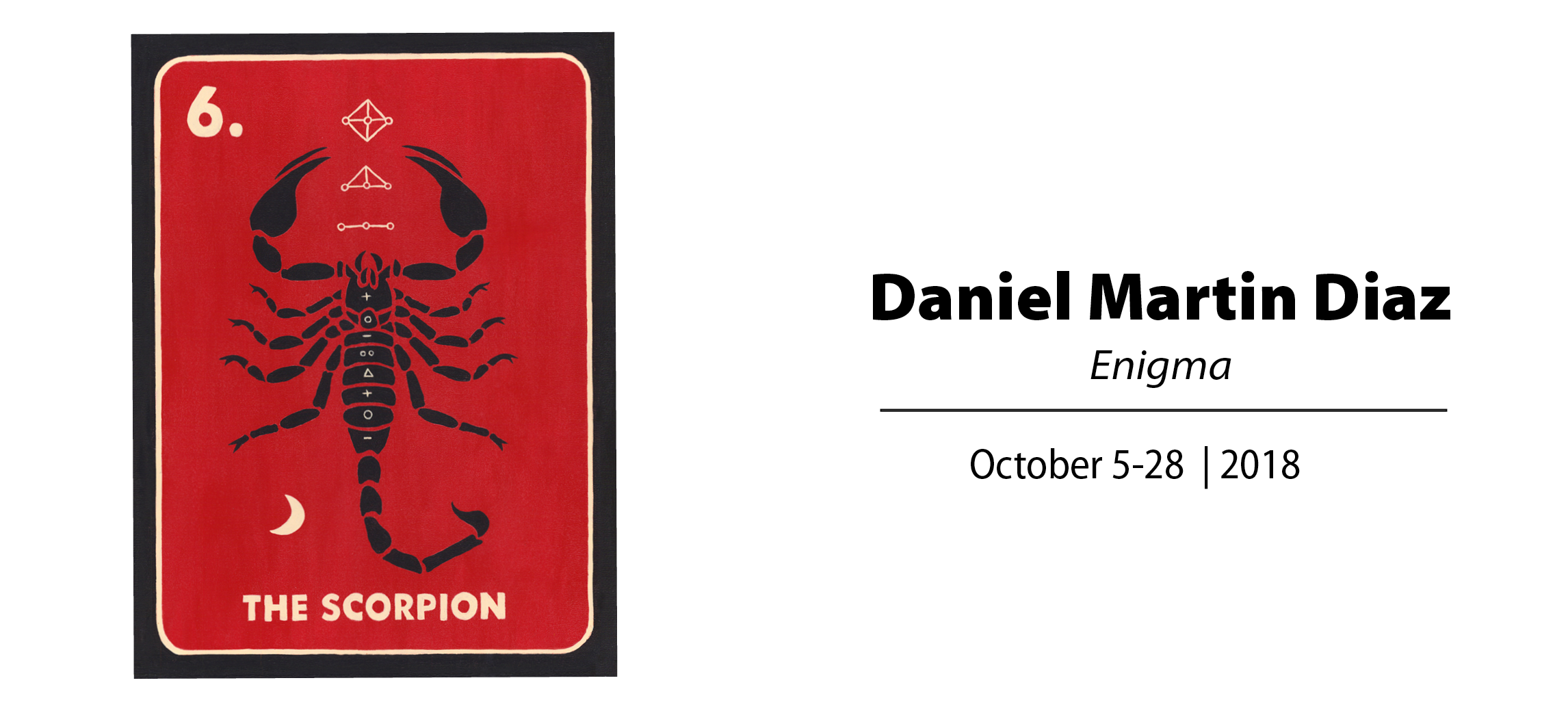Exhibition: October 5-28th
Reception: Fri. October 5th, 8-11 PM
The Enigma of Fate
Teresa Rodriguez
Known for his thought-provoking artwork that transports onlookers to secret places and entices them to question their own reality, Daniel Martin Díaz longed to create a series of images that encourage viewers to get involved in the mysteries of fate, science, and the unknown. After years of contemplation, Díaz has created these cards as interactive ciphers that invite us to explore the realms of reality and divination.
Díaz named his cards Enigma as tribute to the fascinating history of the Enigma machine, invented by Arthur Scherbius in 1918 and used to encode and decode messages. Most famously used for communicating through cryptographic messages during World War II, the Enigma machine is the ideal metaphor for Díaz’s series. Just as the archaic machine was created to encrypt messages with the goal of revealing the true content only to the intended person, Díaz’s imagery acts as a way of receiving messages that only you, as viewer, can understand.
Herein Díaz has created a captivating series that can be enjoyed as two juxtaposed experiences. The first use, the one that will resonate with most, is that of the game of chance called Lotería. Although this beloved game is now most closely associated with Mexico, it originated in Italy. The first recorded lotteries took place in the Chinese Han Dynasty between 205 and 187 BCE and are believed to have helped pay for the Great Wall of China. With the passage of time, lotteries evolved, and in 15th century Italy, the card game version took on an artistic flair, with cards presented as meticulously illustrated masterpieces. Playing the game involved riddles: a card would be drawn, and the announcer would describe it in an impromptu riddle or poem. For example, if the card depicted a frog, instead of just saying, “Frog!” the announcer might say, “If the young lady kissed this creature, a prince she might have.”
The second use of Díaz’s cards is divination. The word “divination” is from the Latin divinare, “to foresee, to be inspired by a god,” while “enigma” is from the Latin aenigma, which means “riddle.” Many cultures believe that tools used in divination were gifts from the gods to humans, a way for gods and spirit guides to communicate with us. These gifts came to us as runes, boards, tea leaves, and cards. Thus, while the name of this series evokes obscurity and hidden meaning, Díaz’s cards may be used to gain insight into any given topic in your life.
Scherbius’s design for the encryption procedure of the Enigma consisted of three independent components. A keyboard produced electrical signals which would pass as inputs through one of 26 different wires (A-Z) through the first component known as the plugboard or Steckerbrett. The plugboard acted as a redirector of input and output from the rest of the machine and consisted of an array of 26 du-
al-pass sockets, each representing a character of the alphabet. If a plug was connect- ed into one socket, say ‘F’ for example, and the other end of the cable was inserted into the socket for ‘L’, a signal passing through one of the wires designated for either ‘F’ or ‘L’ would switch to its respective other upon passing through the plugboard. This component served as a simple substitution function for various input and could support up to 13 cables inserted in any way into the 26 sockets. Signals passing through the plugboard then come in contact with the next enciphering component—the rotor system.
Contact gallery director Matthew Gardocki for purchase info or get on the preview list:
info@laluzdejesus.com (323)666-7667
